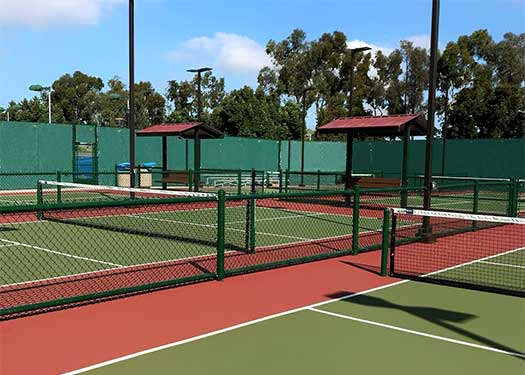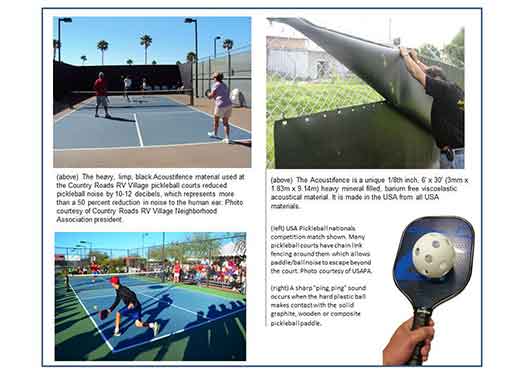Pickleball Court Reduced Noise

Green AcoustiFence® Installed at the New Poinsettia Park Pickleball Courts

CARLSBAD, CA. – The City of Carlsbad had a ribbon cutting ceremony to celebrate the opening of the expanded facilities at Poinsettia Community Park.
The new facilities include pickleball courts that have been lined with our Green AcoustiFence® product to reduce the noise coming from all of the pickleball paddles.
|
|
AcoustiFence® & Its Effect on the Noise of Pickleball Courts
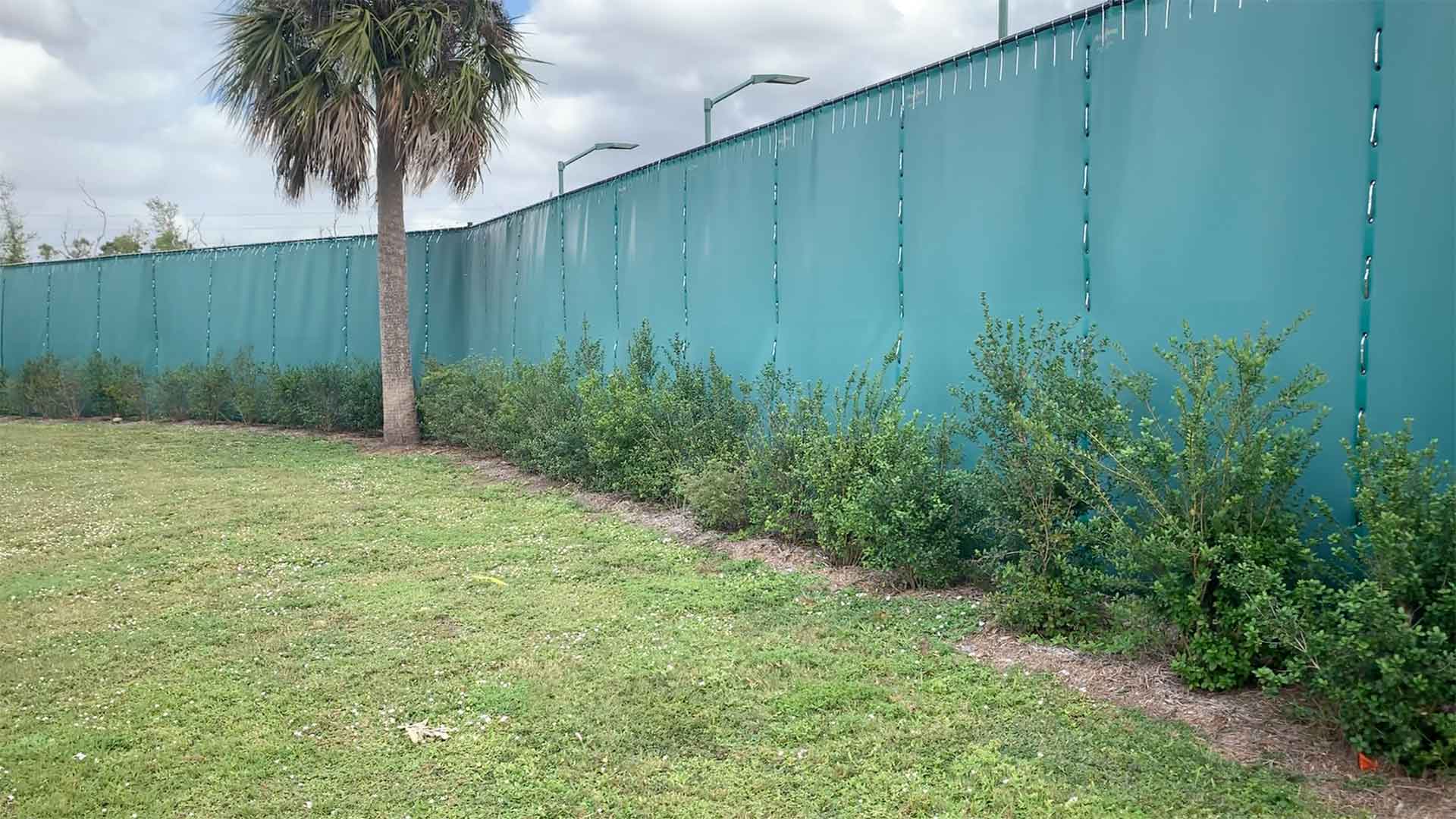
Pickleball Noise Reduction with Acoustifence
YUMA, Ariz. – Acoustifence soundproofing material placed around a pickleball court reduced noise by 10-12 decibels in a sound meter test conducted by USA Pickleball Association president Bill Booth on April 17 at the Country Roads RV Village pickleball courts in Yuma, Ariz. This represents more than a 50 percent reduction in sound as perceived by the human ear the report concludes.
Even as one of the fastest-growing sports in the United States continues to gain new participants and fans every day, pickleball is disturbing some neighbors and communities who don’t want the courts around because paddle noise has become a nuisance issue for some people living close to the courts.
In addition to being one of the fastest-growing sports in the United States today, pickleball has spread overseas into Canada, Singapore, India, Pakistan and other places. According to the USA Pickleball Association, the sport boasts an estimated 100,000 adult players in the United States now, more than triple the number in 2003. There are about 2,500 public courts, versus just 150 in 2003.
For decades, the game of pickleball was little known outside the Pacific Northwest United States. Since its inception in 1965 as a backyard pastime, it is now an organized sport represented by national and international governing bodies. While people ages 6 to 70-plus play pickleball and even compete in local, regional and national tournaments, the main driver of the recent growth is the 55-plus demographic who have taken a liking to the sport. They view it as a way to exercise, burn calories, socialize, and get outdoors. More and more pickleball courts are being built in community parks and especially into 55-plus housing developments. Some communities are converting sporadically used tennis courts into pickleball courts or painting additional lines on tennis courts so pickleball can also be played. Pickleball is played on a smaller court size than tennis but has a similar court design.
More courts, participants, tournaments, and attention to the game has brought on more public complaints and even noise or nuisance related lawsuits attempting to stop play on existing courts or stop construction of new courts.
Racket and paddle sports like tennis, badminton, and table tennis (ping pong) each produce a unique sound when the racket or paddle hits the ball. In pickleball, there is a “ping, ping” sound made when the paddle hits the ball because the sport uses medium-sized, solid faced wooden, composite or graphite paddles and a hard plastic perforated ball (resembles a Wiffle ball) that is larger, stiffer and less resistant than a tennis ball. The noise generated by the game is louder, sharper and at a higher pitch than tennis which generates a deeper “thwack” sound that registers far lower on a sound meter.

Pickleball Court Reduced Noise
Pickleball paddle noise is in a sound classification called impact noise – noise that occurs when an object collides with another object. It is a high frequency noise that is at a frequency that our ears are most attuned to. Through Acoustiblok’s analysis and modeling efforts of various pickleball noise related projects, the company says there’s one limiting band of approximately 1.25 Khz (1250 hz) that spikes when the paddle hits the ball. Acoustifence blocks much of the noise and reduces it to below a nuisance level for nearby neighbors, becoming barely perceptible among other outdoor background noises such as automobile, airplane, human, and machine noise.You can hear the pickleball paddle noise for yourself by watching the following YouTube video of a tournament match at: http://www.youtube.com/watch?v=pdVMcIDQJlA [http://www.youtube.com/watch?v=pdVMcIDQJlA __title__ USA Pickleball Association nationals competition]
Unlike often tried natural sound barriers such as fences or shrubs, the Acoustifence material does extraordinarily well in not only blocking direct sound, but also has a tendency to reduce sound from reflecting off it. Acoustifence is a revolutionary heavy mineral filled viscoelastic polymer sound deadening material which is only 3mm (1/8 inch) thick. It’s made in the United States and compared to other soundproofing alternatives, is an economical way to reduce outdoor noise.
The ultraviolet (UV) tolerant Acoustifence is hung via grommets onto the top line of existing chain link, panel, security or support pole fencing systems. It comes in 6 X 30 foot-sheets and can be easily cut and shaped into custom sizes with a craft knife. On solid structure fence surfaces, Acoustifence can be installed by nailing, stapling or gluing. Acoustifence is one of the most effective first steps in reducing outdoor noise. The amount of noise Acoustifence reduces however is much related to other reflective structures in the area. More details on Acoustifence can be seen at: https://acoustiblok.com/acoustical_fence.php
Country Roads RV Resort is a 55-plus gated community which boasts 150 acres of lavish, mature landscaping and 1294 privately owned home sites. The Acoustifence testing was conducted by USA Pickleball Association president Bill Booth. Tests were made using a Super Scientific Digital Data logging Sound Meter (model 840013), a S-Type Composite Extreme Paddle, and New Dura Fast 40 outdoor balls. Tests were made with the tester attempting to hit the ball with maximum force for a worse-case scenario. A series of readings were taken both through the Acoustifence sound curtain and with no sound curtain. Readings were recorded with the meter at 50 feet from the point of impact. In the first case, the reading was even taken through the sound curtain next to a nearby home at a point 42 feet from the sound curtain. The paddle was 8 feet inside the court for a total of 50 feet. The second set of readings was recorded inside the court at a distance of 50 feet from the point of impact.
With no sound curtain, readings ranged from 64.2 – 71.8 decibels for an average of 68 decibels. Through the Acoustifence sound curtain, the meter readings were between 54.7 – 59.2 decibels for an average reading of 56.7 decibels. The report concluded that an 11.3 decibel reduction in sound was achieved. This represents more than a 50 percent reduction in sound as perceived by the human ear by nearby homeowners. That reduction in sound takes the pickleball noise from being annoying to someone to being just barely perceptible, the report conclusion stated. The report also recommended that the Acoustifence product be installed on the inside of the pickleball court if the fence posts are outside the court. The report went on to say that homeowners near the Country Roads RV Village pickleball courts who had the most complaints and lived closest to the courts reported a significant reduction in sound level from having the Acoustifence material up. He said that his wife often does not realize that they are playing on the court. At times, ambient noise significantly exceeded paddle noise.
Lahnie Johnson is president and founder of Acoustiblok, Inc., a NASA spinoff listed company in Tampa, Fla., that invented and manufactures the Acoustifence product.
“Acoustifence serves as a barrier and blocks high frequency sounds very well. The material actually flexes with certain frequencies. In the process of sound waves physically moving it, the product transforms sound wave energy into inaudible internal friction energy. It is Underwriters Laboratories listed and in independent laboratory tests has attained an STC (Sound Transmission Class) of 27 or 30, depending on the model.” said Johnson.
“Like all our products, Acoustifence is made in the USA with all USA materials. Besides the primary benefit of reduction in perceived noise levels, there are many reasons why Acoustifence is being used not only in the United States, but across the globe for many applications,” he said.
“There are many reasons why Acoustifence is a good solution for pickleball noise. For homeowner associations and developers, Acoustifence easily attaches to existing fencing found around most existing pickleball courts and complexes and can be put up in a matter of hours with a few minor hand tools. It is easily configurable to add height and length so it can be used on fences of any size. The material is paintable to meet the needs of the environment,” said Johnson.
“There are vinyl photographic coverings for the fence called Acoustiblok landscapes. Hundreds of different unbelievably realistic landscapes are available, from vines and flowers to even antique brick wall, or stone fence photographs. So real one of our customers drove right by their home forgetting they had it installed,” he added.
“Acoustifence is also one of the best priced first response soundproofing solutions in the industry,” Johnson added.
Melissa Wood is community association manager at Country Roads RV Village. In a related World Fence News article about pickleball and Acoustifence, she said, “I can attest that Acoustifence material is not difficult to install, can be easily blended into the aesthetics, particularly if you have existing wind screens.” She added that Country Roads RV Village is located near Phoenix and other communities have seen the installation and have inquired about it.
Besides pickleball, Acoustifence is commonly used to quiet generator and motor noise at industrial sites, highway and construction related noise on bridges, mass transit rail line noise, shooting/gun range noise, and even dog kennel noise. It is also being used at college sports complexes and athletic parks and on private backyard residential fences to create a quieter and more peaceful environment.
“People are discovering that there are a lot of great uses for this modern day soundproofing product,” Johnson said.
Johnson went on to say, “We’re not just a soundproofing products company, we’re a noise solutions company. Sometimes, prior to the sale of Acoustiblok’s products, we perform computer-based sound propagation modeling when customers are unsure if Acoustiblok’s materials will work in their specific application.
“We use advanced software called Cadna-A, a top acoustical software made by DataKustic used in the prediction of environmental outdoor noise. It calculates sounds through mediums and different barriers and terrains. We have used it for pickleball-related customers who all have a different set of circumstances associated with their noise. We also use DataKustic’s Cadna-R software for prediction and presentation of inside noise in industrial facilities, rooms and workplaces.”
“We use this acoustical modeling to say to the potential customer ‘here’s your noise level now without Acoustiblok’s material and here’s the noise level with our material based on the noise information we have available to us right now.’”
AcoustiFence® Pickleball Court Noise Reduction Project
Pickleball Noise Problem Solved – Country Roads RV Property Owners Association, Inc. recently purchased and installed Acoustifence® on the Pickleball court within our community. Since being installed only a few years ago, The Pickleball court has been considered a nuisance by some of the nearby residents because of the sound that the paddle makes when hitting the ball. Pickleball is a mixture of badminton and tennis, however the ball is a large type of wiffle-ball.
The Board of Directors saw the need to keep the game because of its growing popularity and abate the noise for the neighboring homes. In researching on the Internet, a Board member found the website for Acoustiblok, Inc. After much research the Board of Directors voted unanimously to purchase and install the Acoustifence. Upon installation the neighboring homes noticed a considerable reduction of the repetitive ball play.
With our close proximity to Phoenix, Arizona, other communities have asked to see and test for themselves the Acoustifence product. I have attached to our testimony the correspondence from Bill Booth, President of The USA Pickleball Association.™
I can attest that Acoustifence material is not difficult to install, can be easily blended into the aesthetics particularly if you have existing wind screens and does abate any noise pollution.
Feel free to contact me personally if you have any questions about our Community’s experience.
Sincerely,
Melissa Wood, CAAM®
Community Association Manager
Homeowner Report:
The homeowner with the most complaints and living closest to the courts reports a significant reduction in sound level. He said that his wife often does not realize that they are playing on that court. The homeowner was very friendly, assisted with the test and monitored the results.
The homeowner had a theory that the sound would be louder at his home if the hits were not so close to the sound curtain. Therefore, we made several hits at the other end of the court, 90 feet from the home. His theory did not prove correct with an average reading of 52.8db. Ambient sound levels were in the range of 47-51db if we waited for quiet periods when there was no aircraft noise, traffic noise or voices. At other times, ambient noise significantly exceeded paddle noise. We have the homeowner’s contact information if necessary.
Do you have a similar need? Contact us today!
Pickleball Anyone?
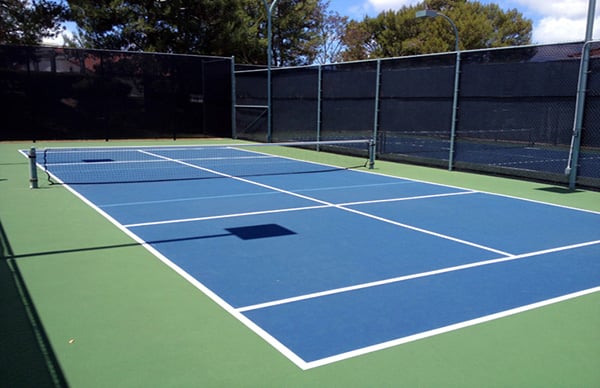
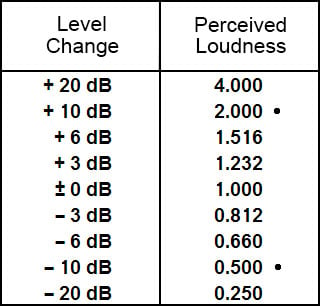
Pickleball Information & Its Noise Impact on Communities
Pickleball Paddle Noise Concerns – Picklers can now be found in most states across America. Picklers have even made their way across the border to Canada, Singapore, and India. Pickler fever, like Bieber fever, has gone viral and mainstream. So don’t be offended if someone asks you to “get your pickle on” sometime because if you haven’t heard about the sport of pickleball by now, you probably will soon. The sport has officially arrived in the United States and may be coming to a neighborhood near you.Pickleball is one of the fastest-growing sporting craves in America and has even begun to spread overseas. While pickleball is an inter-generational sport for players ranging in age from 6 to 70-plus, it’s the 55-plus year-old demographic that is driving the recent fast-rising popularity of the sport.
Some describe pickleball as a dwarf version of tennis. Others describe it as an over-grown version of ping pong (table tennis). It’s played like tennis and scored like badminton. Regardless of what you think it is, the pickleball phenomenon has taken hold.
For decades, the game was little known outside the Pacific Northwest United States. Since its inception in 1965 as a backyard pastime, Pickleball has seen significant growth in the United States over the past decade. It is now an organized sport represented by national and international governing bodies. According to the USA Pickleball Association, the sport boasts an estimated 100,000 adult players in the United States now, more than triple the number in 2003, and there are about 2,500 public courts, versus just 150 that year.
Pickleball has seen an explosion of sort in Florida, especially in Central Florida, which is considered by many to be the pickleball capital of the world now. The Villages, a popular retirement community located near Orlando Florida, hosts more than 108 courts alone.
More and more pickleball courts are being built in new 55-plus communities and are being added to existing communities all over the United States and in other countries too. Del Webb, the United States’ largest builder of active-adult communities, had pickleball courts in fewer than one in five of its developments in 2006. Now, says Jacque Petroulakis, spokeswoman for parent company Pulte Group Inc., the figure is above 50 percent, and Del Webb incorporates pickleball into almost everything it builds. “It’s the hottest craze sweeping our communities,” she says.
Pickleball has spread across the United States and into Canada. It is now beginning to spread around the world. The United States Pickleball Association estimates there are more than 100,000 active picklers. In Canada, where the game is still relatively new, there are already more than 5,000 players in just four provinces: British Columbia, Alberta, Quebec, and Ontario. Meanwhile new organizations like the Singapore Pickleball Association and the All India Pickleball Association are bringing the game to Asia and beyond.
For pickleball players, the sport is a way to exercise, burn calories, be social, and get outdoors. The sport is easy to learn, even for those without much athletic experience. For all of these reasons, players find pickleball addictive, with demand for court time often exceeding available space. And in case you were wondering exactly what the term “pickler” means. According to the World Pickleball Federation (yes there is one), a pickler is a certified pickleball player who may or may not become addicted in the next 10 minutes or less. The sport with a whimsical name also has some whimsical terms and definitions. While many picklers play the game for fun, many play it competitively in regional, national and international singles and doubles tournaments.According to the website of the USA Pickleball Association, which officially took over the sport in 2005, pickleball is played on a badminton-size court with the net lowered to 34 inches at the center. It is played with a perforated plastic baseball (similar to a Wiffle Ball) and solid wooden, composite, graphite or aluminum paddles that resemble large table tennis paddles. The game was invented by a man in Washington state in 1965, and is named after his dog Pickles who used to chase balls all over a court.
The “Racket” of the Pickleball Paddle – Ping, Pop, Thwack
As picklers get excited about their smashes, rallies, put-aways, serves, and volleys on the court, some residents off the court living within earshot are crying foul. Even as momentum for the sport builds, the game has left a trail of detractors and spawned studies to determine if the sport meets noise regulations. When the pickleball paddle hits the hard plastic ball it makes a unique “pop” or “ping” sound that is louder and sharper to the ear and registers 3-5 decibels higher on a sound meter than the “thwack” heard when a tennis racket hits the softer tennis ball. Regulation games are played to 11 points (a team must win by two points). Some local games are played to 15 points so the ball may strike the paddles hundreds of times in a game.This constant hard sharp sound can be bothersome to some residents living near the courts if the sound is not blocked by natural barriers of some type or by acoustical material hung on the fence that surrounds the court.
You can hear the sound for yourself by watching the YouTube video of a tournament match.
http://www.youtube.com/watch?v=pdVMcIDQJlA
While the sport of pickleball is growing with new fans every day, it’s also faulting with some neighbors and communities who don’t want pickleball courts in their area because of the unwanted sounds and continuous racket/noise. In some communities, the divisions have prompted heated meetings among property owners, calls for noise studies and even claims that pickleball is destroying property values.
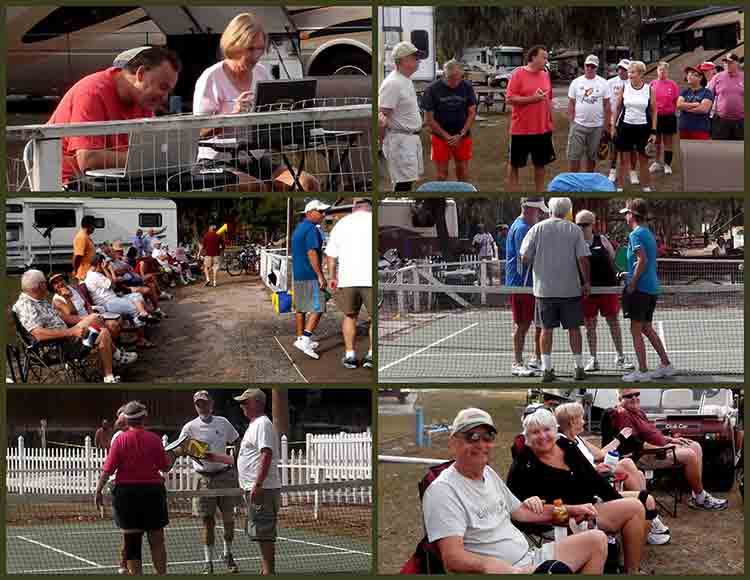
Pickleball Paddle Noise Concerns
KEY POINTS OF ARTICLE
- Pickleball is one of the fastest-growing sporting craves in America. Boasting an estimated 100,000 adult players in the U.S. now, more than triple the number in 2003. There are about 2,500 public courts, versus just 150 courts in 2003. Courts are full. The 55-plus demographic is driving the growth.
- Some people living close to courts claim it is a noisy sport and is a nuisance. A sharp “pop” sound is made when the paddle hits the hard plastic ball. On a sound meter, this noise registers about 64.2-71.8 decibels. The sound is louder than the softer “thwack” sound made in tennis.
- Acoustiblok’s Acoustifence soundproofing material placed around a pickleball court can reduce noise by 10-12 decibels according to a sound meter test conducted by USA Pickleball Association president Bill Booth. This represents a 50 percent reduction in sound as perceived by the human ear.
- Some lawsuits have been filed to stop new courts from being built. Some neighborhood associations are receiving increasingly more complaints.
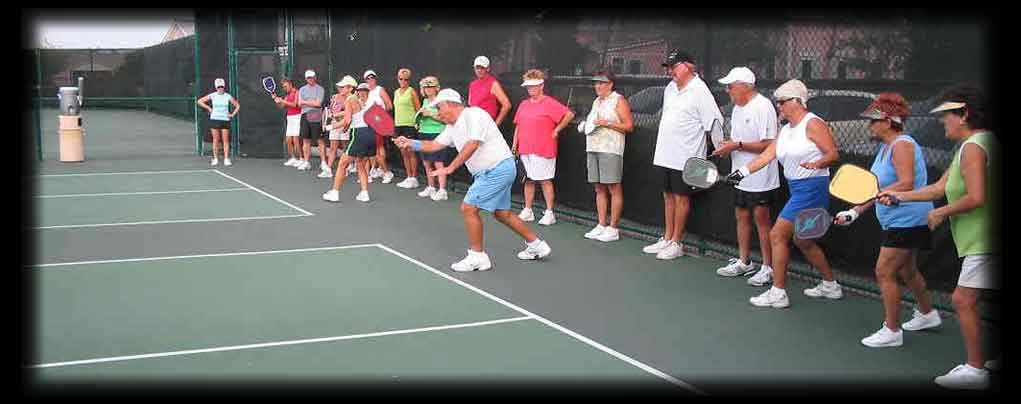
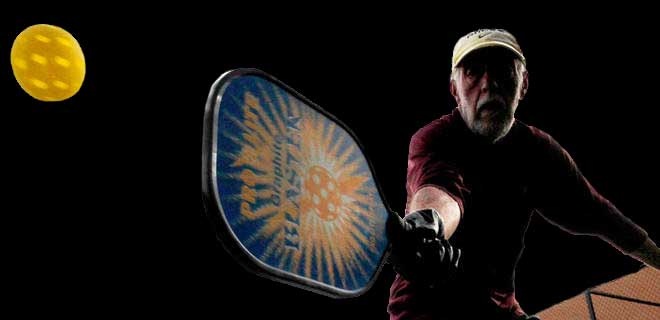
Increasing Number of Courts Could Lead to More Noise Issues
Pickleball Racket – According to the USA Pickleball Association (USAPA), the number of places to play pickleball nationwide has grown in the past 12 years from just 37 to nearly 1400. In Mission Royale, a 55-plus community in Casa Grande, Ariz., the local pickleball club is trying to secure courts of its own. Partly in response to noise complaints, the community’s developer, Meritage Homes Corp., recently said it would be willing to spend “significant dollars” to relocate pickleball from a converted tennis court, says Jeff Grobstein, desert region president for Meritage.
Ron Heymann, 65, whose home is about 100 feet from the existing courts, says he won’t be sorry to see pickleball go. The noise from games—that of a “hard plastic ball thunk-thunking repetitively on a hard wooden paddle”—is “akin to a toothache that won’t go away.”
Pickleball players in Mission Royale dispute such claims—for the most part. “There is a constant ‘ping, ping,'” concedes John Grasso, 61, president of the local pickleball club. In March, Mr. Grasso says the club purchased a decibel meter from RadioShack. The findings: Tennis reached about 58 decibels while pickleball hit about 60. “There really was no difference. It’s just a different sound.”
The difference was enough to evict the sport from its home in SaddleBrooke near Tampa, FL. Residents there first asked pickleball players to switch to a rubber ball to cut back on noise. Pickleball players passed. Many feel like the sound is an integral part of the game and the experience.
“Ask golfers to use a different kind of ball, and see what they say,” says John Benter, 69, local pickleball president.
A $4,500 noise study found that sounds from pickleball play were spiking above the county’s 60-decibel limit, which applies to ongoing noise. As a result, the homeowners’ association banned use of standard pickleball paddles and balls on the courts, effectively shutting down play.
Pickleball-Related Lawsuits
Pickleball Paddle Noise Concerns – Pickleball has also sparked lawsuits throughout the United States from people concerned and irritated about game noise that has intruded into their homes and personal outdoor spaces.
A November 15, 2012 Rockford Register Star article states that a lawsuit filed to stop pickleball from being played in Sinnissippi Park could be settled with additional noise control efforts from the Rockford Park District. In Winnebago County, Illinois, two people filed a complaint to the Winnebago County court asking for an injunction to stop play at the six courts at the Sinnissippi Pickleball Center. The complaint said the “pop” the ball makes as it flies off the paddle sounds “like a hammer blow on a blacksmith’s anvil” and “the noise filters into every part of their property and household.”
An article found on AzCentral.com website said Otis and Jean Vaughn thought the active lifestyle and peaceful setting of Venture Out RV Resort were the perfect ticket for retirement when they bought a home in the east Mesa community. For much of the past two decades, they played tennis, exercised at the community pool and traveled. But the Vaughns said that tranquility ended when the “pinging and popping” sounds of pickleball erupted on badminton-size courts that were built last year about 30 feet from their driveway.
“It’s absolutely deafening,” he said of the hard-surface paddles striking perforated plastic balls. The Vaughns’ protest is among a chorus of objections to noise generated by the game in at least four Arizona retirement communities and several other states.
Noise Mitigation Solutions
Some of the noise problems for pickleball are not just because of the rackets and ball used. There are other issues. Some pickleball courts were built too close to homes. Also, most courts have chain link fencing around them which doesn’t block any noise. Some courts have tried using screen meshing on the chain link fence but it is porous and does not block noise well. Other developments have used trees and landscaping as a way to block noise during matches. These natural barriers are seldom effective.
There are other more modern acoustical solutions to the pickleball noise that can be used and are currently being used by pickleball associations and builders. Acoustifence is a modern day acoustical soundproofing product that just happens to be developed and sold by the owner of this blog – Tampa, Fla.-based Acoustiblok, Inc.

Pickleball Paddle Noise Concerns
Pickleball Paddle Noise Concerns – Acoustifence is an advanced material sound barrier that is placed between a noise source and the noise receiver. The Acoustifence material easily attaches to chain link fences and comes in large sheets and in custom made sizes, making it ideal. In a sound meter test conducted by USA Pickleball Association president Bill Booth on April 17, 2012 at the Country Roads RV Village pickleball courts in Yuma, Arizona, Acoustifence soundproofing material placed around a pickleball court reduced noise by 10-12 decibels This represents a 50 percent reduction in sound as perceived by the human ear the report concludes.
Let’s Google That Pickle Word
Today, if you Google the word pickleball, it receives about 840,000 results. Google the word ping pong and you get 74 million results. Google badminton and you get 110 million with volleyball yielding 165 million results. America’s current most popular sport, NFL football yielded 266 million results. So pickleball, while gaining popularity, is still finding its way into the cyber-world compared to other popular recreational activities. Google the word “pickleball noise” and you’ll get 40,300 results, probably much more than the sports governing bodies feels good about.
Despite a few small bumps in the road, pickleball is finding its way into the hearts of many.
Since publishing, these numbers have changed dramatically. Google “Pickleball” now and you will receive 51,900,000 results. Google “Pickleball Noise” and you will receive 2,860,000 results.
_______________________
Pickleball Links
United States of America Pickleball Association
http://www.usapa.org/
International Federation of Pickleball
http://ipickleball.org/
Pickleball Basics
• Pickleball is a fun game played on a badminton court with the net lowered at 34 inches on center. It is played with a perforated plastic baseball, similar to a wiffle ball, and wood or composite paddles. It is easy for beginners to learn, but can develop into a quick, fast-paced competitive game for experienced players.
• There are usually four players – two each side on a team – playing over a net slightly lower than in tennis. Singles can play a match also.
• In tournaments, a match will usually consist of the best 2 out of 3 games to 11.
• Players swing rackets that look like a beefed-up version of a beach paddleball paddle and hit a wiffle ball that’s slightly harder than the play-in-the-streets variety.
• The serve is underhanded and goes diagonally like in tennis, but the ball must bounce once on each side before players are allowed to hit a volley (out of the air). A player serves until he/she side outs then a person on the other team serves.
• Inside ”The Kitchen,” a 7-foot zone on both sides of the net, volleying is not allowed; players have to let the ball bounce once if they’re in that area.
• Teams only score when they’re serving, and each player gets a turn before the other side gets a shot.
• There are a few more rules, but the main thing is that pickleball is a blast.


